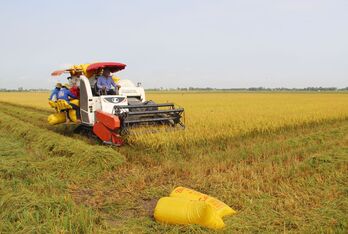 Illustrative image (Photo: VNA)
Illustrative image (Photo: VNA)
Despite difficulties caused by the COVID-19 pandemic, two-way trade between Vietnam and the UK has grown in double digits, especially Vietnam's export to the UK market increasing by 15.4%.
This is the clearest proof of the benefits the UKVFTA brings to both sides, Khanh said.
The growth of UK export to Vietnam is higher than that of Vietnam's to UK, helping Vietnamese businesses make more use of raw materials, technologies and products from the UK to improve their production capacity.
The majority of Vietnam’s key products exported to the UK such as coffee, pepper, rubber, vegetables, textiles and footwear have grown remarkably, with some items even rising by nearly 100%.
For example, the increase in fabric import turnover from the UK shows that some Vietnamese enterprises have used imported fabric to produce items meeting rules of origin.
The UK is becoming a supplier of high-value raw materials and technology for Vietnamese businesses, helping them fully tap the benefits of the UKVFTA, Khanh said.
Another advantage is that the UK is a huge market with strong purchasing power, so it is a potential market for Vietnamese firms to expand their exports.
According to Nguyen Anh Duong, head of the Central Institute for Economic Management’s General Research Department, both Vietnam and the UK have exploited each other's advantages to expand trade.
Ngo Sy Hoai, Vice President and Secretary General of the Vietnam Timber and Forest Products Association, said Vietnamese businesses should create turning points to produce higher added-value exports by using less labourers and materials, and investing more in corporate governance and modern accounting software.
Trade between Vietnam and the UK topped 5.22 billion USD in the first nine months of this year, of which Vietnam ran a trade surplus of 4.07 billion USD with total export revenue of 4.65 billion, up 8.1% year-on-year.
Vietnam’s exports to the UK are expected to continue rising in the remaining months, especially rice that will grow sharply in the last quarter and even the first two months of 2023./.
VNA
 Tay Ninh approves planning area of 124,000 hectares for high-yield, high-quality rice
Tay Ninh approves planning area of 124,000 hectares for high-yield, high-quality rice

 Illustrative image (Photo: VNA)
Illustrative image (Photo: VNA)
